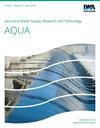Optimal decision-making in the water, land and food nexus using artificial intelligence and extreme machine learning
IF 4.3
Q2 Environmental Science
引用次数: 0
Abstract
The development of decision-making systems based on artificial intelligence can lead to achieving optimal solutions water-land-food nexus. In this paper, an extreme learning machine model was developed with the objective function of wheat production maximization. The constraints defined for this problem are divided into three categories: technical parameters of production in agriculture, climatic stress on water resources and land limits. The water, land and food nexus was simulated using 23 experimental farms in Henan province during the 2021–2022 cultivation year. Root-mean-square error was used as an error criterion, and Pearson's coefficient was incorporated into the decision-making system as a correlation index of variables. Harvest index, length of the growth period, cultivation costs and irrigation water were the criteria to evaluate the impact of the sustainable model. The harvest index and the length of the growth period showed the highest and lowest correlation with the production rate, respectively. Furthermore, the optimal management of irrigation water and cost had the most significant impact on increasing crop production. The method proposed in this paper can be a virtual cropping model by changing the area under cultivation of a crop in the different farms of a study area, which increases yield production.利用人工智能和极限机器学习实现水、土地和食物关系的最佳决策
基于人工智能的决策系统的发展可以实现水-陆-粮关系的最优解决方案。本文以小麦产量最大化为目标函数,建立了一个极限学习机模型。为这一问题确定的限制因素分为三类:农业生产的技术参数、对水资源的气候压力和土地限制。以河南省23个试验农场为研究对象,模拟了2021-2022年种植年间的水、地、粮关系。采用均方根误差作为误差判据,将皮尔逊系数作为变量的相关指标纳入决策系统。以收获指数、生育期长短、栽培成本和灌溉水量为评价指标。收获指数和生育期长度与产量的相关性分别最高和最低。此外,灌溉用水和成本的优化管理对作物增产的影响最为显著。本文提出的方法可以是一种虚拟种植模型,通过改变研究区不同农场的作物种植面积来提高产量。
本文章由计算机程序翻译,如有差异,请以英文原文为准。
求助全文
约1分钟内获得全文
求助全文
来源期刊
CiteScore
4.70
自引率
0.00%
发文量
74
审稿时长
4.5 months
期刊介绍:
Journal of Water Supply: Research and Technology - Aqua publishes peer-reviewed scientific & technical, review, and practical/ operational papers dealing with research and development in water supply technology and management, including economics, training and public relations on a national and international level.

 求助内容:
求助内容: 应助结果提醒方式:
应助结果提醒方式:


